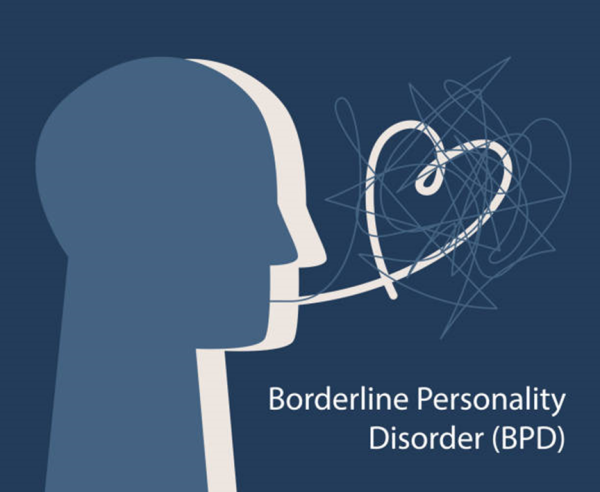/ Globe PR Wire /

Receiving a diagnosis of Borderline Personality Disorder (BPD) can be life-changing. For loved ones, it often brings a mix of emotions—concern, confusion, and sometimes even relief, as it can help explain years of behavioural patterns. But how do you start a conversation about something so deeply personal, especially when the topic can feel intimidating or triggering?
In this guide, we’ll explore how to approach this sensitive discussion with empathy, respect, and clarity, so your loved one feels seen, supported, and empowered—not judged.
Understanding Borderline Personality Disorder
Before diving into the conversation, it’s crucial to understand what BPD is. Borderline Personality Disorder is a mental health condition characterised by:
l Intense emotional instability
l Fear of abandonment
l Impulsive behaviours
l Unstable self-image
l Difficulty maintaining relationships
l Rapid mood swings
These symptoms aren’t signs of manipulation or intentional drama—they’re the result of deep emotional pain and mental health struggles. BPD is often misunderstood, so approaching it with compassion and knowledge is key.
Why Talking About the Diagnosis Matters
Being diagnosed with BPD can evoke many emotions in the person affected—shame, fear, relief, confusion. Sometimes, individuals may deny or dismiss the diagnosis entirely. However, an open and supportive conversation can:
l Help reduce stigma
l Show your unwavering support
l Encourage treatment and therapy
l Strengthen your relationship
l Offer hope and clarity
Prepare Emotionally and Logistically Before the Conversation
Educate Yourself First
Before initiating a discussion, learn about BPD from credible mental health sources. Understanding the symptoms, treatment options, and lived experiences of those with BPD provides a more informed foundation for a meaningful and supportive conversation.
Reflect on Intentions
Clarify the purpose of the conversation. Whether it’s to offer support, encourage treatment, or better understand their experience, having a clear, respectful objective ensures the discussion remains grounded and productive.
Choose a Comfortable Setting
Privacy and comfort are key. Select a calm, neutral environment free from distractions. This can reduce anxiety and encourage open communication.
Approach with Empathy and Respect
Use Supportive Language
Communicate in a way that avoids blame, judgment, or assumptions. Phrases like “I’m here for you” or “I want to understand what you’re going through” can create emotional safety and encourage trust.
Avoid Labeling and Pathologizing
Refrain from overly clinical language or using the diagnosis to define their personality. Instead of saying “you have BPD,” consider expressions like “you’ve been diagnosed with BPD, and I want to understand what that means for you.”
Acknowledge Their Experience
Validate Their Emotions
Individuals with BPD often feel misunderstood. Recognizing their feelings as real and significant can ease defensive reactions and build rapport.
Listen More Than You Speak
Give them space to share their thoughts. Practice active listening by maintaining eye contact, nodding, and summarizing what they say without offering solutions unless invited.
Address Stigma and Misconceptions
Dispel Myths
BPD is often misunderstood. Clarify that it is a manageable condition with the right support and that it does not define their worth or identity. Counter stereotypes with facts.
Promote Hope Through Treatment
Discuss evidence-based treatments such as Dialectical Behavior Therapy (DBT), Cognitive Behavioral Therapy (CBT), and medication management. Emphasize that improvement is possible, and many live meaningful, stable lives with appropriate care.
Encourage Professional Help
Gently Recommend Resources
Offer to help find a therapist or support group specializing in BPD. Mention national and local resources, including mental health helplines, community clinics, and online therapy directories.
Normalize Help-Seeking Behavior
Frame therapy as a tool for personal growth rather than a sign of weakness. Share positive stories or testimonials if applicable.
Set Healthy Boundaries
Communicate Clearly
Express your needs and limits respectfully. Setting boundaries can protect both parties and maintain a balanced relationship.
Avoid Codependency
Resist the urge to “fix” their problems. Support them without taking on the role of a therapist or caretaker.
Practice Patience and Consistency
Healing takes time. Continue to show up with compassion and patience, even when progress seems slow. Celebrate small wins and remain committed to the relationship.
Take Care of Yourself Too
Supporting someone with BPD can be emotionally demanding. Ensure you prioritize self-care by maintaining your own support system, seeking therapy if needed, and practicing mindfulness or stress-reduction techniques.
When Crisis Arises
Know the Warning Signs
Be aware of behaviors that indicate emotional crisis, such as self-harm, suicidal ideation, or extreme mood swings. Respond with care and seek professional help immediately when necessary.
Emergency Planning
Discuss safety plans and emergency contacts ahead of time. Knowing what steps to take during a crisis can ensure both safety and swift intervention.
Reaffirm the Relationship
Continue to express care, commitment, and acceptance. Remind them that they are valued and not alone. Reinforcing emotional connection helps reduce isolation and fosters recovery.
Conclusion
Talking to a loved one about their BPD diagnosis requires empathy, preparation, and resilience. Through respectful dialogue, active listening, and consistent support, it is possible to build trust, reduce stigma, and guide them toward healing. With the right approach, both the individual and the relationship can grow stronger, grounded in mutual understanding and compassion.
The post How to Talk to a Loved One About Their Borderline Personality Disorder Diagnosis appeared first on Insights News Wire.
